Racing Season Recap: Rounds 6 & 7, ER6 Upgrades
Addiction Accelerates
Racing is a healthy enough addiction. It’s eye-wateringly expensive, dangerous as all hell, and one of the most exciting things a person can do I reckon.
At the beginning of this year, fresh on the newly sober wagon, I started spending my time rebuilding the ’06 Ninja 650R (AKA ER6) I bought for a song during 2020. It sat doing nothing for about 2 years, then things proceeded more or less quickly. I’d been collecting parts, but I didn’t have enough time to put the pieces together when I was drinking. I found myself with plenty of time to work on the bike, so that’s what I did.
My first goal was to put the bike on the street and ride it like that. I wasn’t sure what I was capable of quite yet. Street bikes are good cheap fun, so that seemed manageable enough. I came up with a new goal after putting a plate on it: to do all 5 of the MRA’s “superstreet” events and maybe get my race license in 2023.
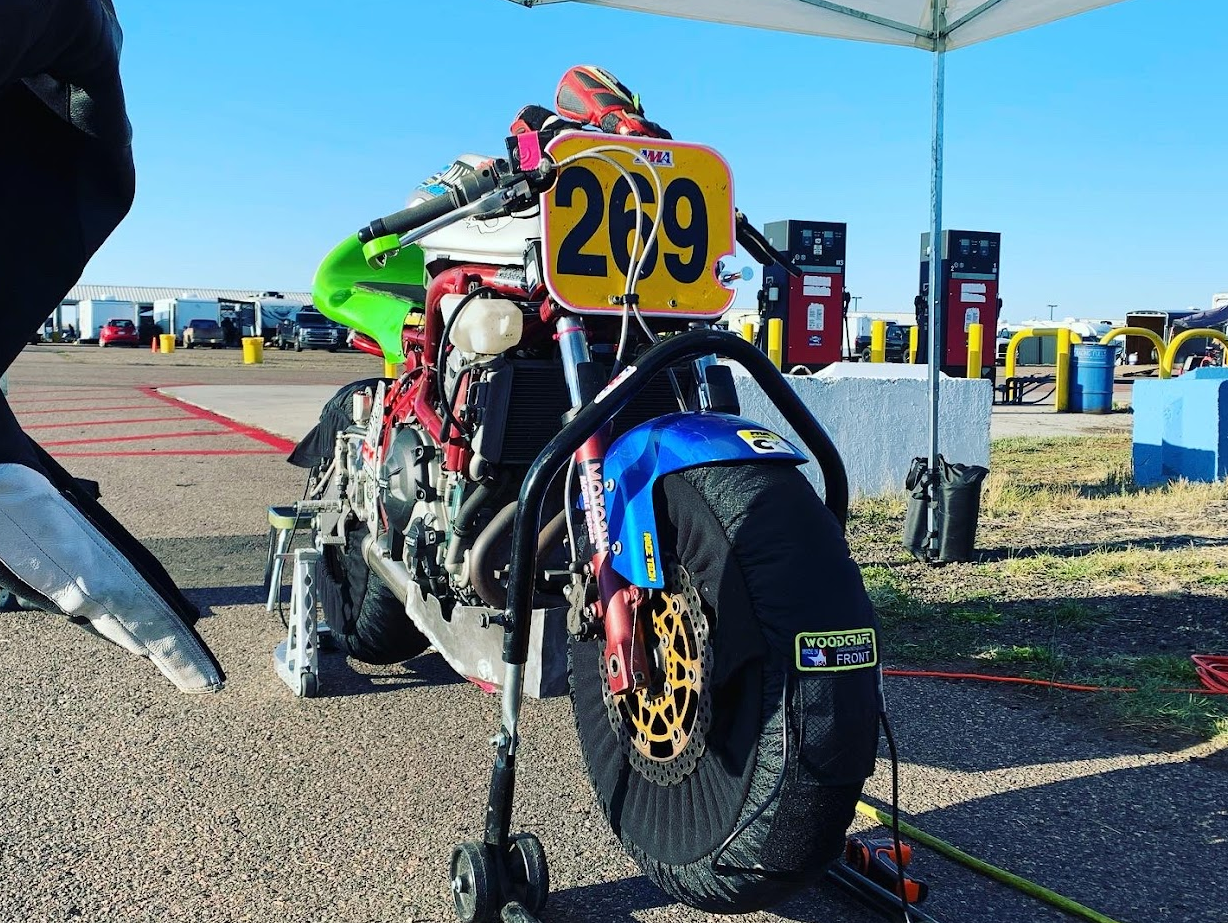
After doing 2 of these events and the mid-season race school, I decided I never wanted to sit in the classroom ever again and decided to go racing in Lightweight Endurance for Round 5 at Pueblo Motorsports Park. I told myself I would stay off of slicks and warmers to keep costs under control. I then found myself with a worn out rear tire and a Dunlop rear slick from another racer after Round 6 at HPR. I got a front take off and a brand new medium compound rear from Louden the Dunlop Tire Guy, bought a generator and tire warmers, and upgraded the bike’s rear suspension ahead of Round 7.
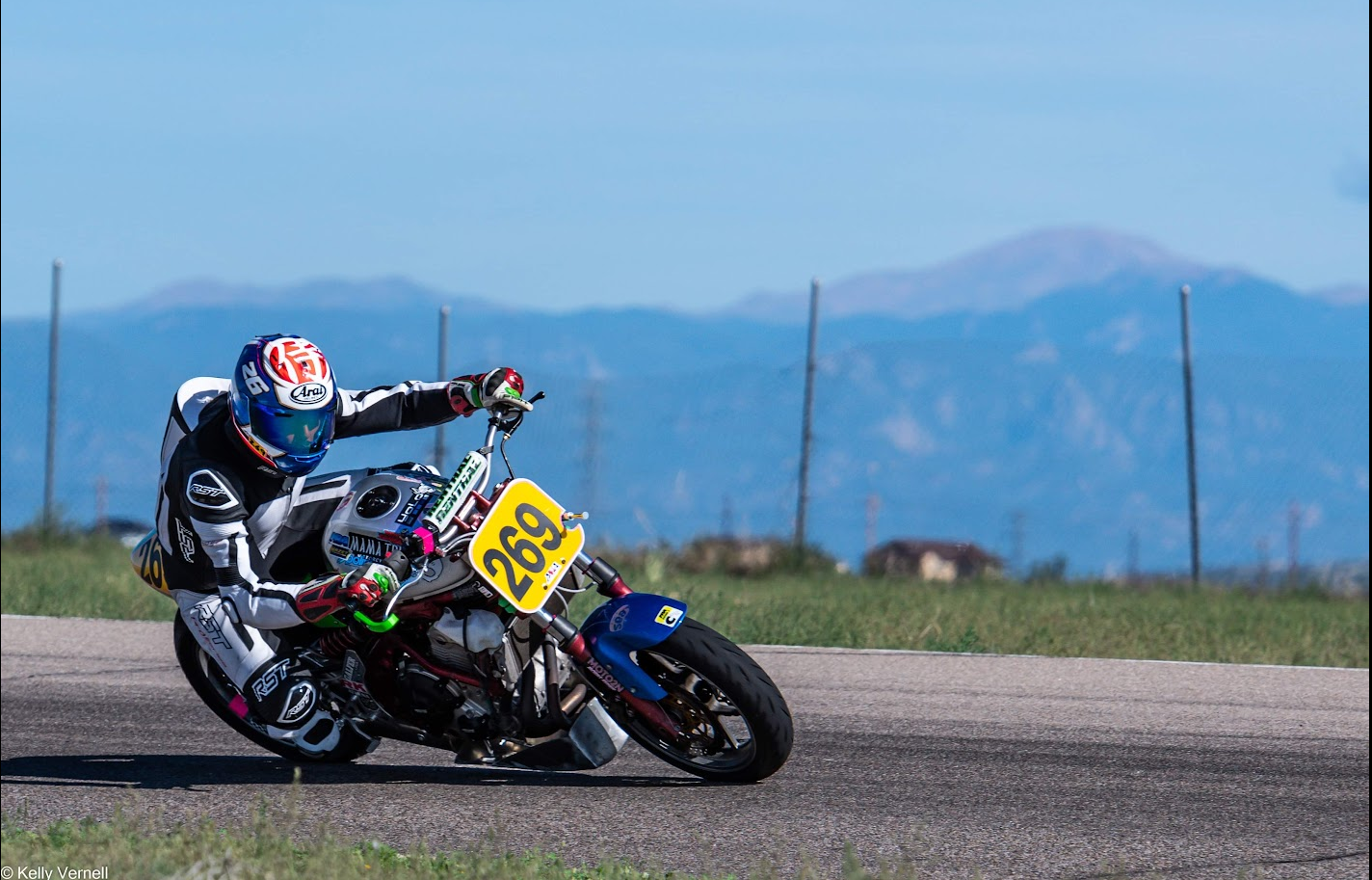
The process reminded me a lot of going from drinking beer on the weekends to slamming whisky shots on weekday mornings to feel normal. I realized I’d traded my addiction to alcohol for an addiction to racing, a better sort of addiction. The bad part of this is racing doesn’t last all year long, and race season has ended in Colorado as of Round 7, so I’m going to have to find something else to do, but I’ve already found it: I have more bikes to work on.
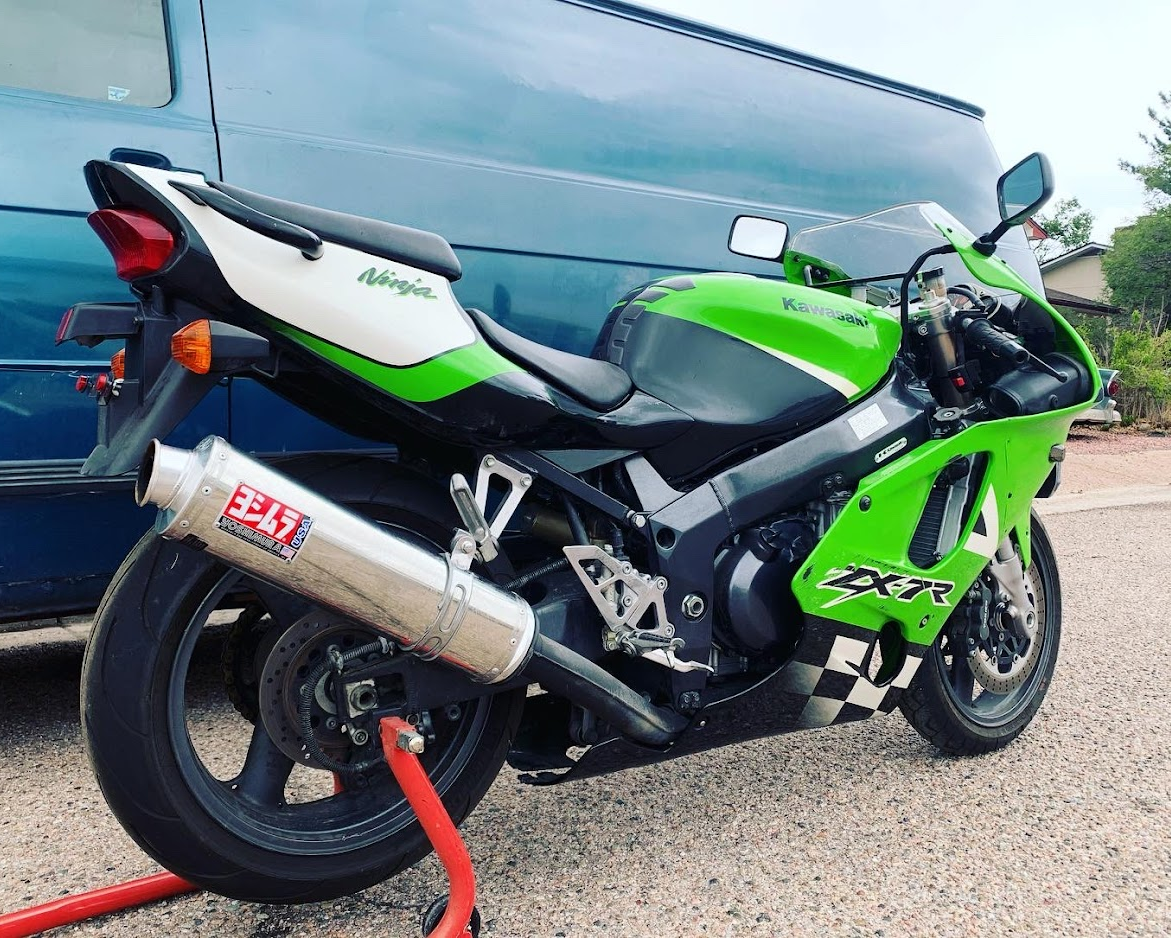
Next up on the project list is the 2002 Kawasaki ZX7R I bought this year, also for a song. It’s very complete, has 18k miles on it, needs its carbs put back together and its valves adjusted. I’ll be posting more about this bike as I get it back on the road. I’d trade that Yosh slip-on for a factory or Muzzys one in a split second… any takers?
Round 6: We Need a Better Belly Pan!
Part of racing a somewhat unpopular bike is that parts aren’t always readily available. The only race fairings I can find for the bike ship out of Italy, and there are no commercially available stand-alone belly pans available for the bike that will hold 3 quarts of oil. So I decided to make one out of aluminum.
Though I didn’t get any stress during technical inspection on 3 different race weekends, a one-man peanut gallery tried to say something about it on Instagram of all places. Kinda funny. I love it when people assume I don’t know what I’m doing. Unsolicited advice is among my least favorite things about being human on Planet Earth. If I care what you think, I’ll ask you. The actual problem with my first belly pan was it scraped every time I stuffed the bike into a corner, so I made another one between rounds 6 and 7. Scraping bodywork is pretty common on roadracing motorbikes, and it’s not that big a deal, but it is an extra thing to grab my attention away from what I’m doing when I really should be paying attention to getting the bike through a corner without falling over.
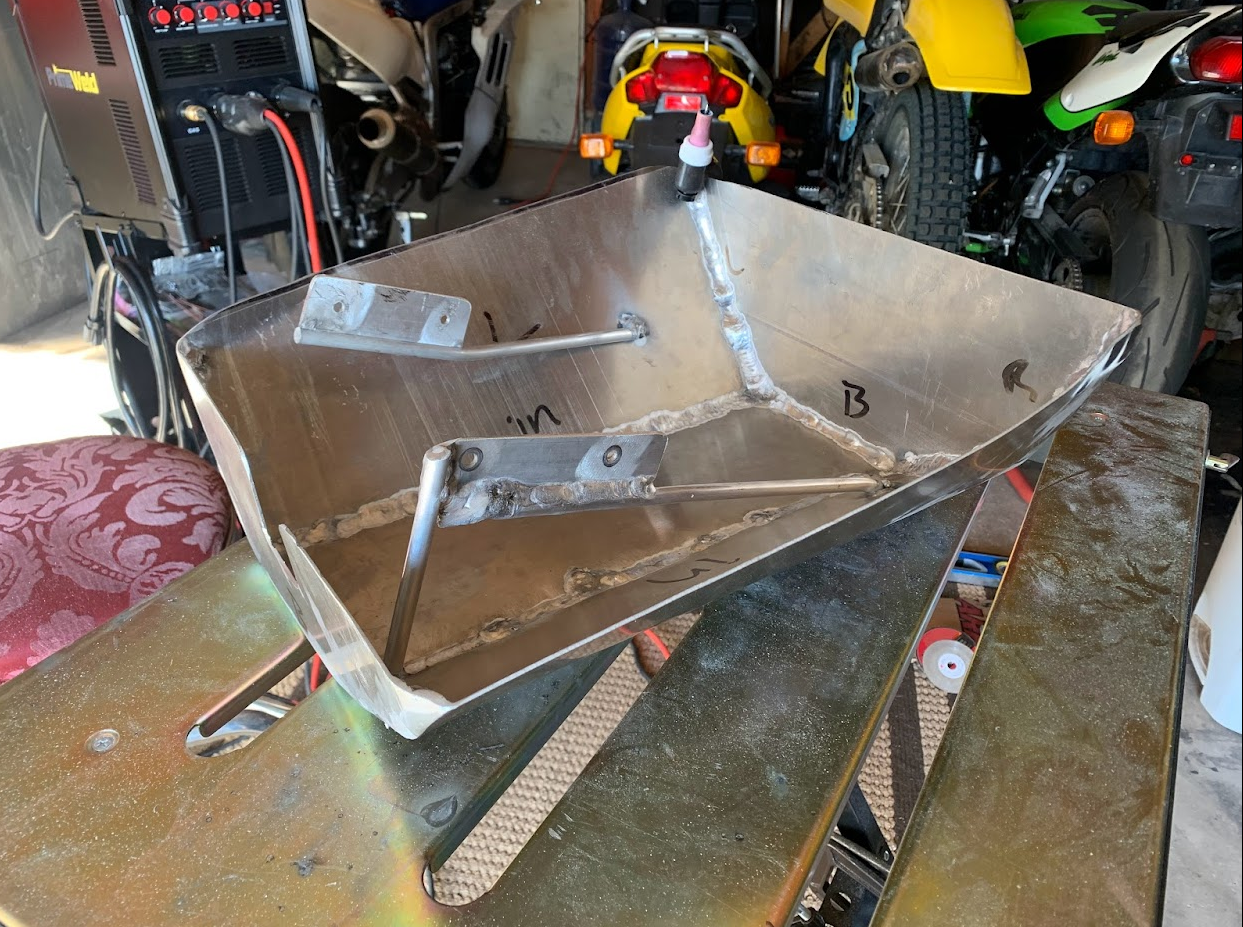
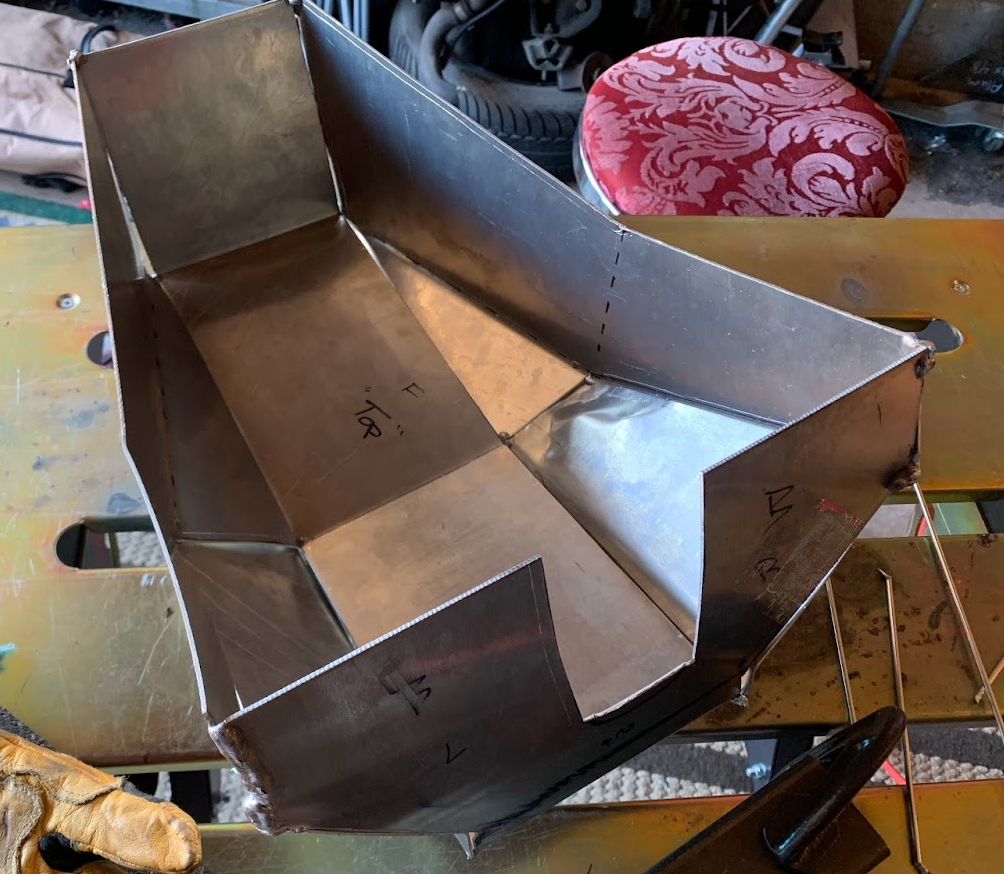
I made the second pan smaller width-wise and deeper height-wise. It mounts in roughly the same way but uses aluminum tube instead of rod for the struts and mounts. It was my first time welding aluminum tubing, and I think I did OK with that. My aluminum welding still isn’t great, but it’s getting there. Need more practice.
So how did it work? THE NEW PAN SCRAPED TOO! Not as bad, but it’s kinda crazy how something that sits so far up and to the inside still makes contact with the track surface when cornering. I solved the problem by raising my fancy-pants adjustable shock to max height and raising the forks by 5mm. After doing that, the pan only scraped a tiny bit on 1-2 corners at HPR. I just made sure to wear my ear plugs and ignore the scraping when it happened.
The second most memorable thing about Round 6 was I ran out of gas just after crossing the finish line in 4th place for the Lightweight GP race. This was all according to my very sophisticated calculations concerning how much fuel it would take to run the race, ensuring my bike was as light as possible throughout the duration of the race. I’m joking. I just didn’t fill the tank up as much as I should have, thinking there was plenty in there already. There was just enough to finish the race and that was it. A small mistake but a mistake nonetheless. The crash cart had to come and get me for the second time this year.
At the end of the day another racer in my class walked up holding a used rear tire as I got back to my van. It was a Dunlop rear slick, ultra-soft compound, that had what he claimed were 6-7 laps on it, but it was “cold tearing” on him, and he ended up not liking the Dunlops as much as his usual Pirellis, so it was for sale. I didn’t figure I’d use it this year, that tire only works well when it’s hotter than Satan’s butthole and you’re riding demon fast, but I would probably be able to use it in 2023, and the Bridgestone S22 that was on the bike was completely smoked, so I gave him $100 for it (arguably too much for a used tire but goodwill etc) and went looking for Mr. David the Dunlop Tire Guy. I found him, and he gave me a front take-off “to try” and about a week later I bought a new medium compound rear from him figuring that would work best at the last round of the season in late September.
The most memorable thing about Round 6 was when Ricky Orlando – local legend, Daytona record-holder, CO Motorsports Hall of Famer, stopped by my pit on his way out and told me to put clip-on style handlebars on my bike. I bought a set from Woodcraft and installed them ahead of Round 7. I’d been thinking about it and that bit of advice from him made my decision final. It was also great to race in the same class as him and get my ass handed to me by 10s a lap. Not only is he personable and easy to talk to, rare feat for a motorcycle racer, he’s still blindingly fast around a race track.
New Stuff for Round 6 and 7
Before I get too far ahead of myself here, I did upgrade the front suspension ahead of Round 6. I ordered and installed a pair of Race Tech’s cartridge emulators and fork springs in the ER6’s stock front forks. My options were either do that OR replace the front end with one from another bike. Tracking down a complete front end is difficult to do without spending a ton of money, so I opted for the emulators and fork springs.
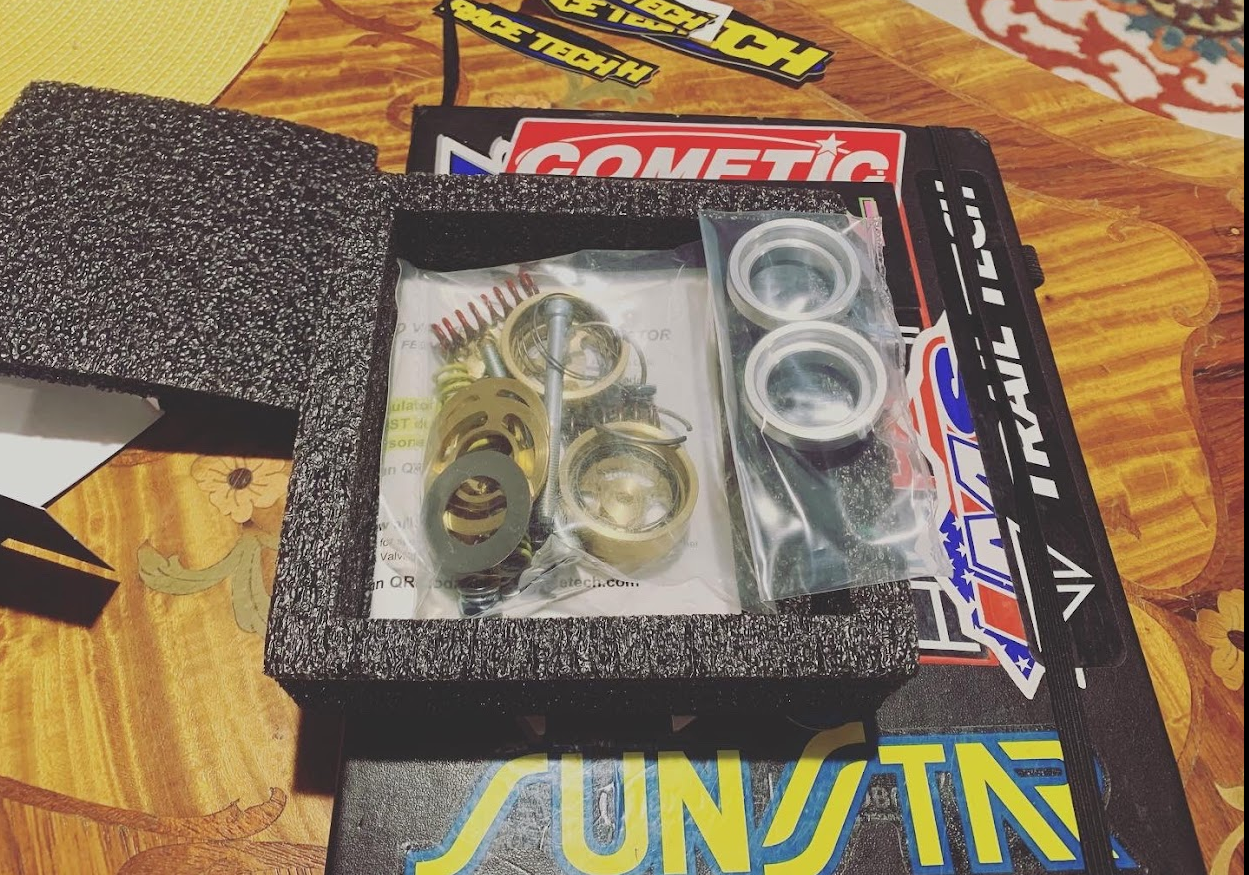
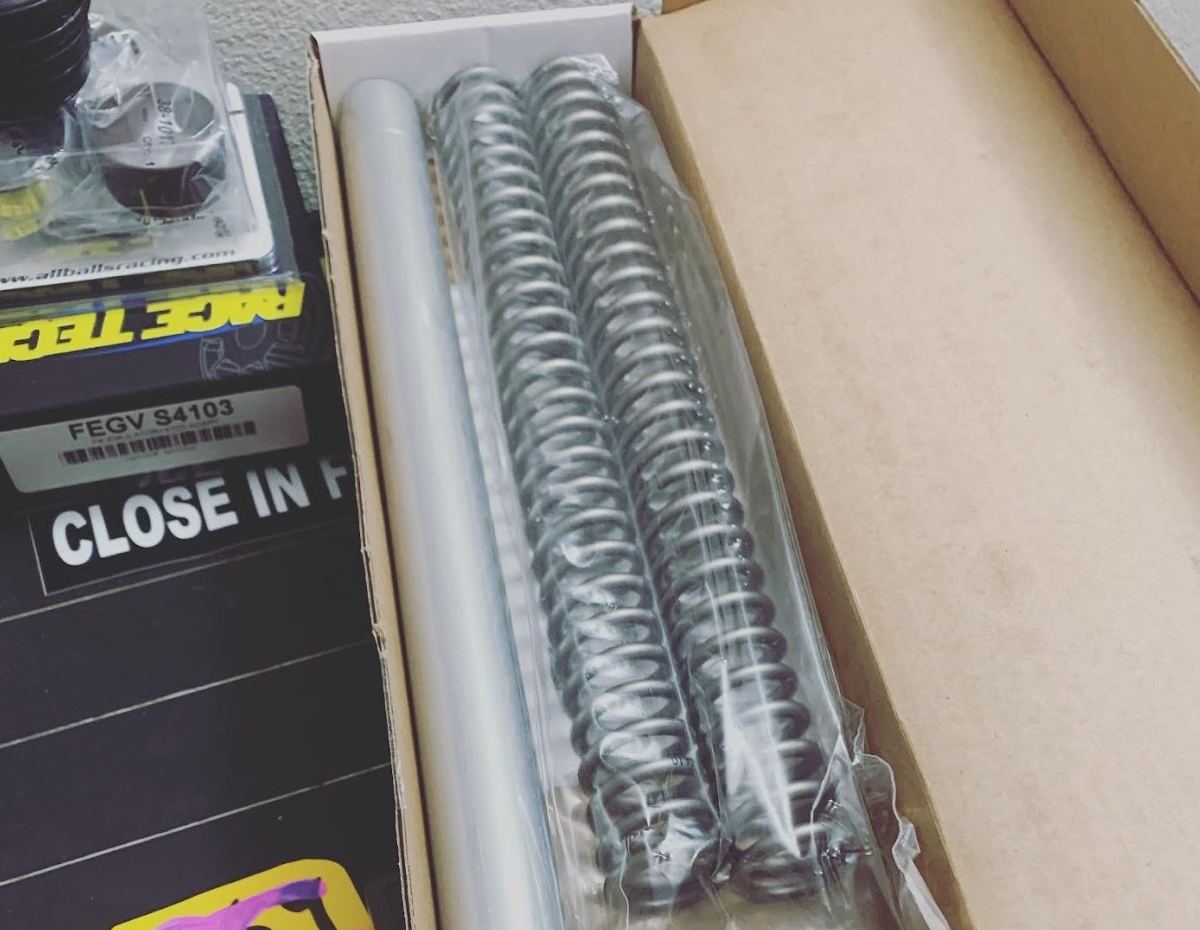
The stock forks on the ER6 are “oversprung” meaning the springs are way too stiff. According to RT’s website they measure 1.2kg/mm. After punching a bunch of numbers into their spring calculator a bunch of different ways, I landed on using their 1.00kg/mm springs.
Emulators have a really good reputation among racers, street, and dirt riders. They’re “ancient” technology, but a lot of things that work well are ancient. They’ve been around since the early 90s if my memory’s right. As far as damping went on the stock setup, what damping? The forks felt harsh and even though I could ride around that a little bit, they didn’t give me the confidence to go much faster than I was going. The difference at Round 6 was like night and day. I used most of the travel in the front forks. It felt more solid, planted. The bike was easier to turn in under braking. But this revealed another problem: the back end of the bike was way UNDERSPRUNG and bouncier than a Vegas stripper. The front end tracked well while the rear end bounced everywhere in the crossover at HPR west course. That and I had slicks for Round 7, and slicks stick harder than DOTs. I needed something that would work better than the stock, ultra-budget rear shock that was on the bike.
The bottom line is a good shock costs money. There are options from Penske, Hyperpro, Wilbers, K-tech, and a Thai company called YSS, and at the end of the day I called up Klaus at EPM Performance out of New Jersey and asked for the YSS unit with adjustable length, rebound, and high and low compression damping. It’s not a “bespoke” made-to-order shock, it’s off the shelf but with plenty of adjustability, and despite being little-used here in the states, they’re pretty popular overseas and get good reviews on other bikes. I asked if the factory 180nm spring would work well given I weigh 195lbs with all of my gear on and was told that yeah, that should work. The only way to really find out is to try it and see. A lot of things are like this; sometimes the best advice is “try it and see what you think”. The answer to “What works best?” is “…it depends”. It can be frustrating spending money on things that you’re not absolutely sure will work, but that’s the way it goes a lot of the time. It took about 4 weeks for the shock to arrive after I ordered it. Installation went smoothly, and there was a nifty mount for the remote reservoir in the box.
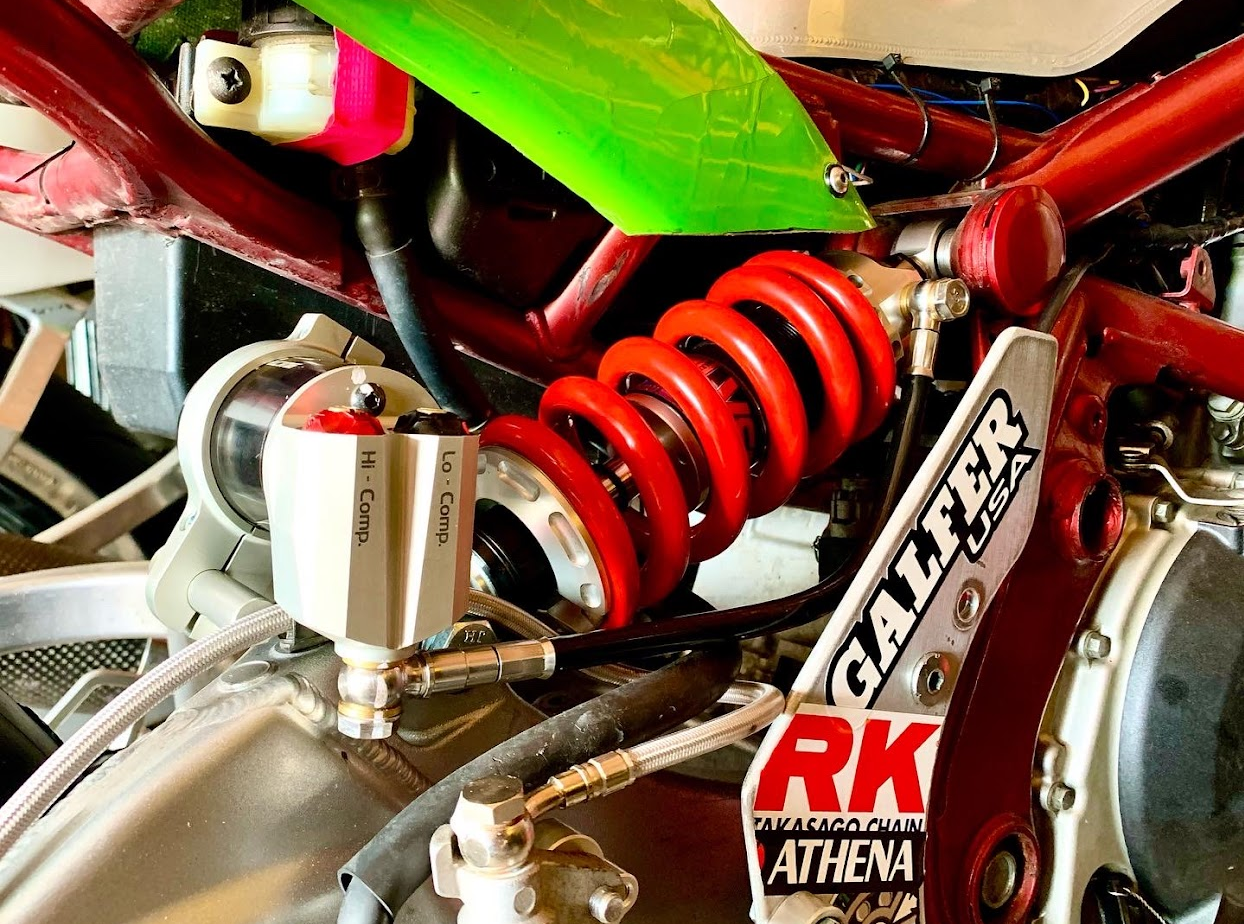
I didn’t intend on running slicks and warmers this year, but I ran through the rear Bridgestone DOT during Round 6, and, as if by divine providence had the opportunity to buy the aforementioned ultra-soft rear from another racer knowing I probably wouldn’t use it until 2023.
I did some thinking, and a little research, about what slicks to use if the opportunity presented itself. If I had my first choice, it would have been to run Bridgestones. I have some experience with the brand from racing a 125GP bike many, many years ago, and I liked them, and the Bridgestone S22s I used for most of the year never did me wrong. The S22s get mixed reviews from sport riders on the internet who don’t actually race, but I bloody raced on them and went pretty stinkin’ fast without any issues. I’d have no problem running them on a street bike or racing on them with another bike. The ZX7R has a smoked Pirelli on the front and a usable Michelin on the rear, so I’m thinking that bike is going to get a new Michelin for the front. Tires are pretty good these days, so I say run whatever’s most convenient unless you know you have a good reason for having a solid preference.
I had Dunlops on the 125GP for a while and didn’t like them. Comparing slicks from 10+ years ago on a 125GP to what’s on offer in 2022 on a twins class bike is like apples and oranges, but brand preferences don’t often care about logic. Bridgestone is a Japanese brand, and I like Japanese stuff, but there wasn’t a Bridgestone tire vendor in sight at any of the races or events I was at this year.
That left Michelin, Pirelli, and Dunlop to choose from. As fate would have it, Dunlops ended up being the choice. One of my rival racers didn’t like them, the Dunlop guy was cool enough to give me a take-off for free, and they’re what the MotoAmerica guys run. So there. Dunlops it is.
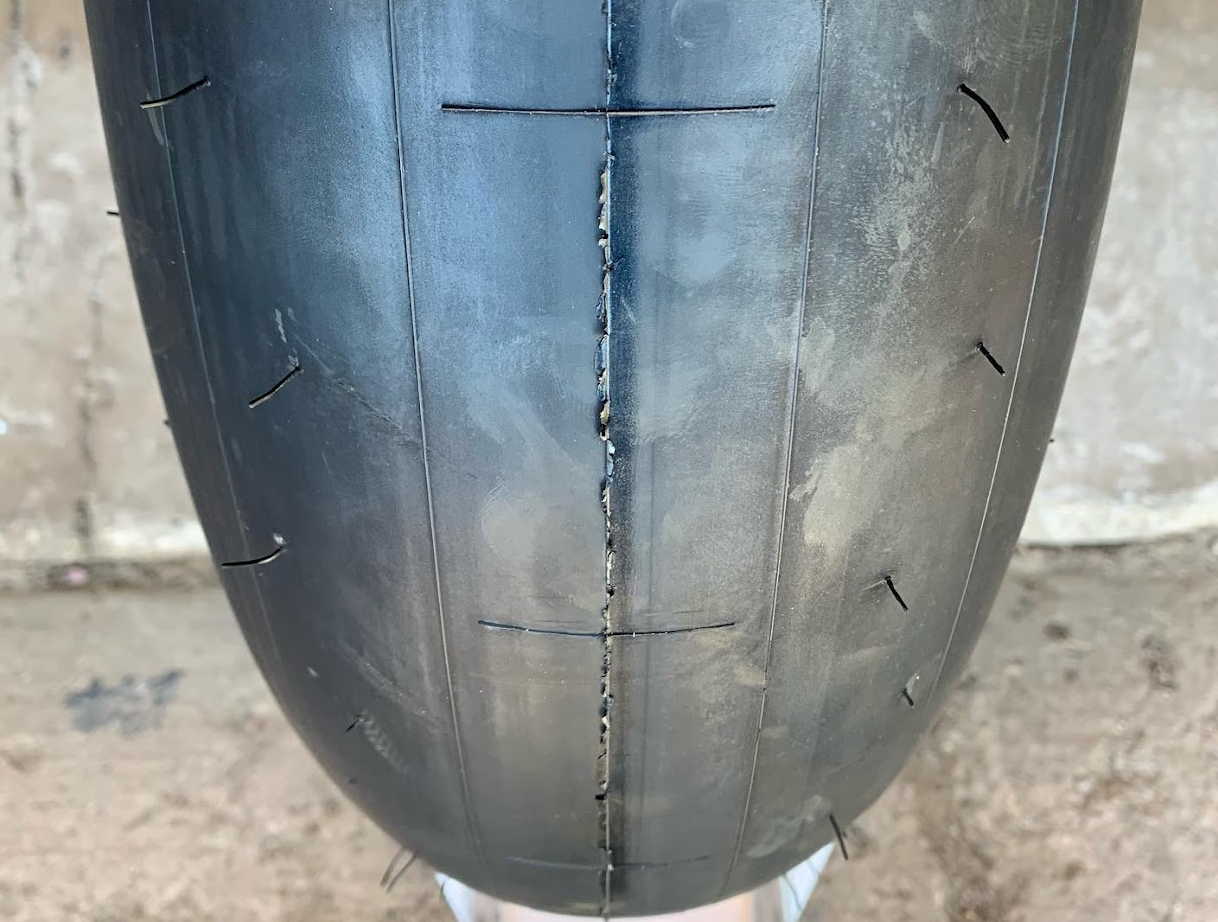
Not much to look at. It’s a tire without tread that’s designed to get stickier than spicy bubblegum when it gets hot.
I was better equipped than I had been all season to do my best at Round 7: slick tires wrapped in warmers, decent suspension, and clip-on style handlebars. The whole point of upgrading the bike is to improve performance, and the only performance that matters is lap times at a race track and finishing position after races.
My fastest lap time at Round 7 was 2:08.4, and I put up lots of laps in the 2:08s and :09s. This was 3s off the pace of the racer I benchmark myself against and met my goal of running into the 2:08s. The bike felt better than it ever had before. I finished 10/19 in Lightweight GP and 4/10 in Lightweight Endurance on Saturday; 5/10 in Supertwins GTU on Sunday. This is a solid “mid-pack” performance in all classes, which I don’t think is terrible for my first year racing and my first outing with OK suspension and slick tires! I feel good about how I did during the last race of the year. No crashes, no mishaps, fast lap times, and solid finishing positions are all a novice racer can really ask for.
Buying Confidence
It’s difficult to learn how to find the limit on a racing motorcycle. Once you find the limit, it’s difficult to dance on the edge of the limit, which is what allows a racer to put up ridiculously fast lap times at a track. I’m still in the process of figuring out how to find that limit.
Once you’re dancing on that edge, you have to be able to tell what’s going on underneath you, what the bike is doing, in order to make the kind of changes that will amount to faster lap times.
I was nowhere near that limit before I upgraded my suspension and mounted slick tires. Why upgrade then? I upgraded because I felt like I couldn’t trust the limits I would have found with an oversprung front, undersprung rear, and DOT tires. Would those limits have been predictable, consistent? I doubt it. Would I have had confidence in them? Nope. Upgrading gave me the confidence I needed to begin to approach the limits, which I did during Round 7.

I got passed by a faster racer in Turn 7, a fast corner, headed into Turn 8, a much slower corner. He didn’t pass me by much, so I decided to see how long I could stay on him knowing I had decent suspension and sticky tires under me. I felt the front starting to slip going into Turn 8. That was fun. I turned in to follow him and found the tires held fine but there was more vagueness coming from both ends. I stayed with him through Turn 11, hard on the brakes and cornering in that grey area of vague feel that I’m going to call the “slush fund of traction” because someone else said it once and it stuck with me. So that’s what the limit feels like. That’s the place I want to be around every corner. I let him go after Turn 11 because I needed time to think about things. But my lap times dropped significantly after trying to keep up with the faster racer who passed me. This is how I got faster. I believed my bike was just as capable as his, so I followed the example he set for me after he passed me.
I’m looking forward to more of that in 2023.
Racing Goals for 2023
I exceeded my wildest expectations this season considering it started out with me thinking I’d be content to put the bike on the street and ride around like that. In total I did 14 track days/races and 2 off-road races this year roughly one event a week. Some weeks I did none, others I did 2. I got faster at every race. I built a cool bike that gets a lot of compliments and looks different from everything else at any given track day and race. I did it all while staying sober and without going broke. I was present at 5 out of 7 MRA race weekends, 2 superstreet events and 3 race weekends as a novice racer. The bike didn’t break. I started and finished all of the races I entered. I got within 3% of the racer I benchmark myself against as far as lap times go. So here’s my not-so-ambitious plan for next year.
- Race at all MRA events in 2023
- Be faster than the racer I benchmark myself against. He knows who he is. If you’re reading this, know that I’m bringing a fight in 2023
- Finish in the top 3 of the championship points in at least one class

Top 3 might be a stretch given my best finishes were in Lightweight Endurance, a 30 minute race that has low turn out and rumor has it might get 86ed from the schedule next year, leaving Lightweight GP – which is extremely competitive – and Supertwins GTU – also a competitive class. If that happens I’ll just have to get more competitive in those classes. I haven’t run out of ideas about how to ride the bike faster, so I will get faster by becoming a better racer.
2023 Race Bike To Do List
- Build an aluminum subframe
- Build a new wiring harness OR improve on the existing one
- Start on, complete an alloy tank
As far as the bike goes, it’s pretty well configured at the moment, but the engine is box-stock from the air filter to the exhaust, and I’m not interested in modifying it. The above changes focus on making the bike tricker, more reliable, and easier for me to ride. I absolutely cannot afford to build a 90hp engine that will probably explode halfway through the season. I can afford to replace a blown up stock engine, so the engine is staying stock for the time being. I’m pretty sure I have it in me to run faster than anyone with a bike making comparable horsepower to mine, but if enough people show up on Aprilia RS660s then my “Top 3” goal might be dead in the water, in which case I’ll do my best with what I have and try to beat my benchmark.